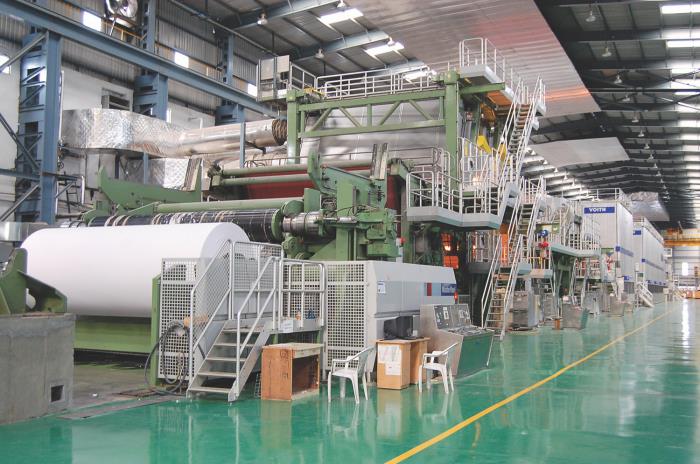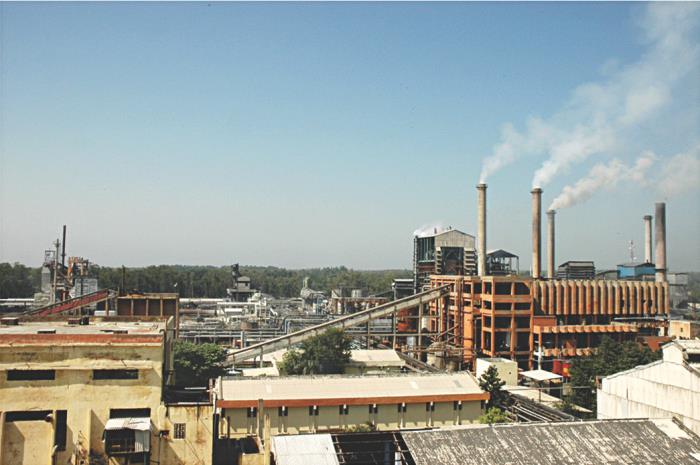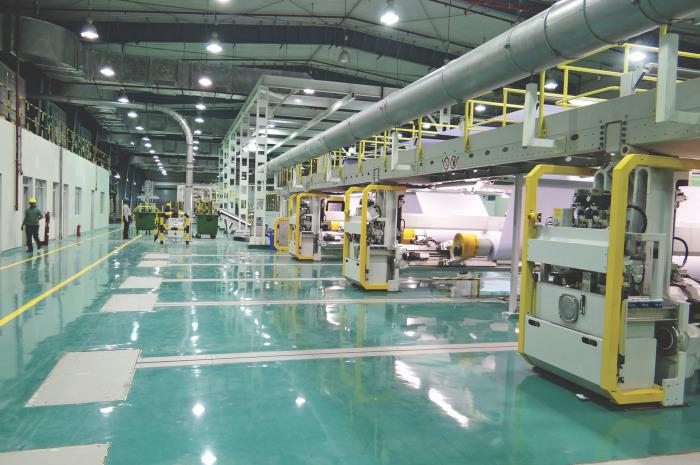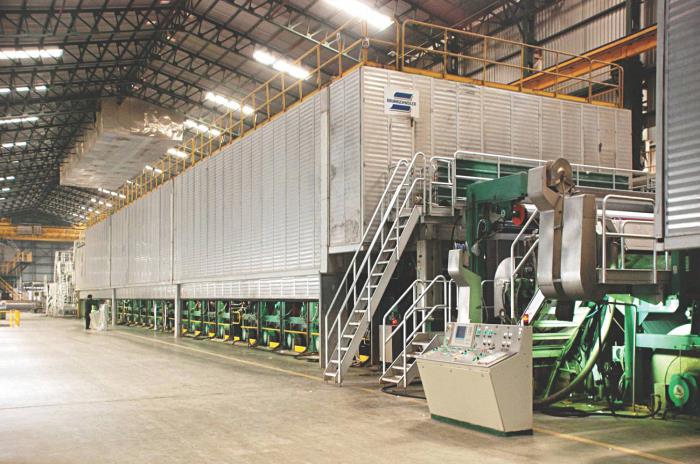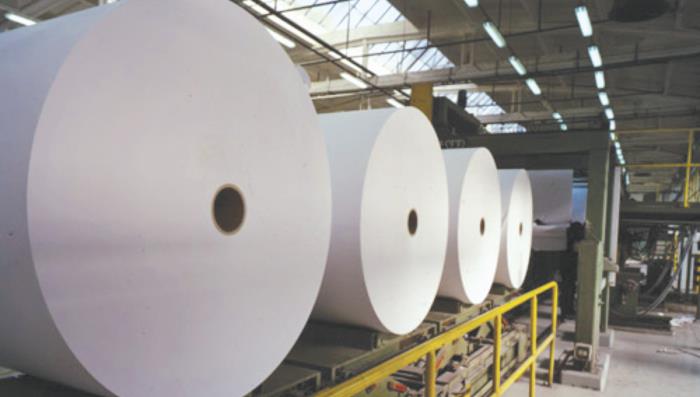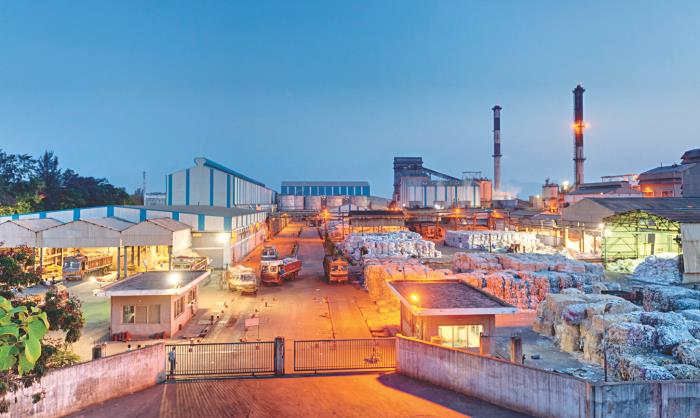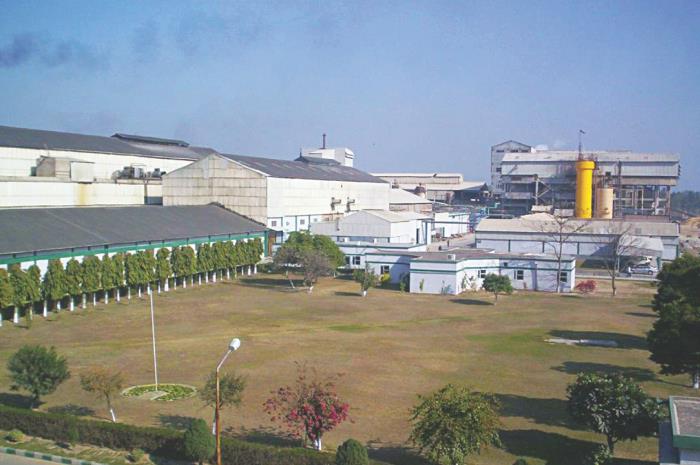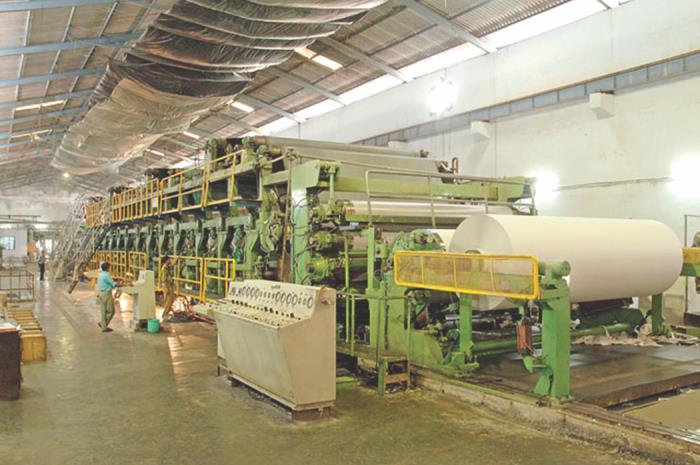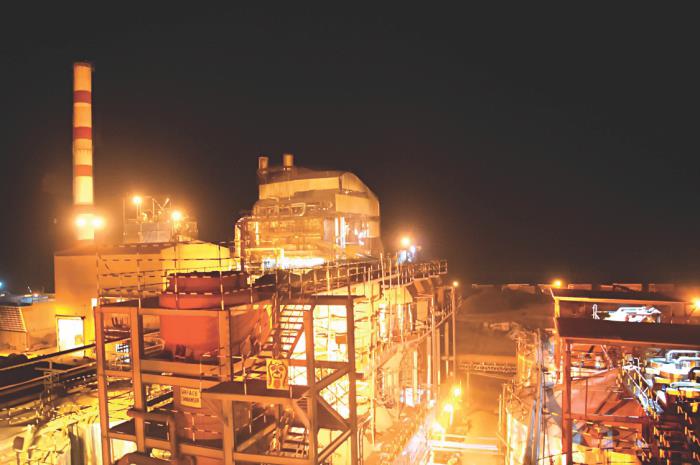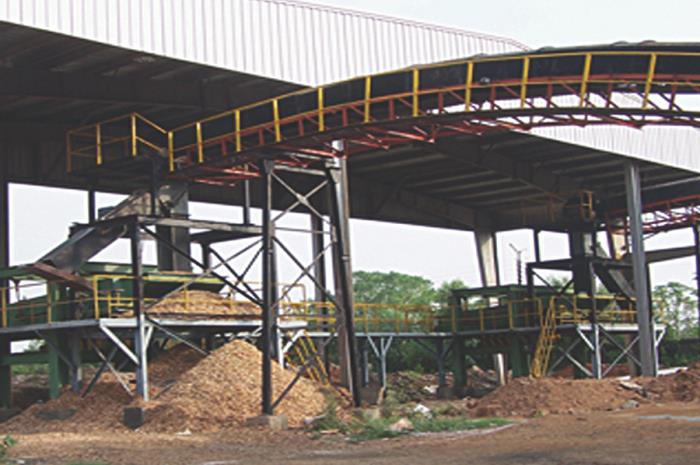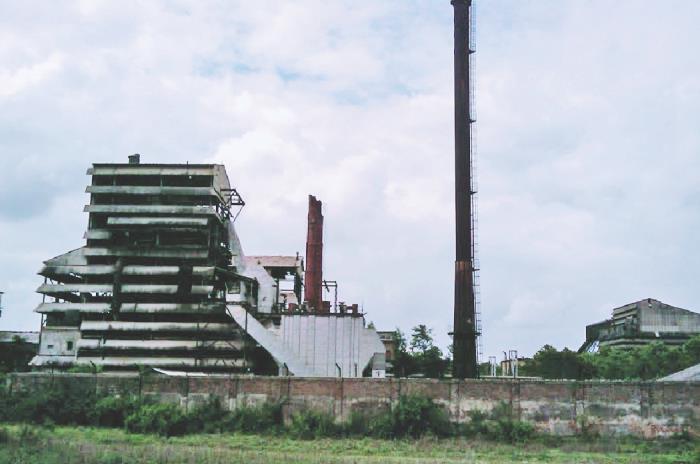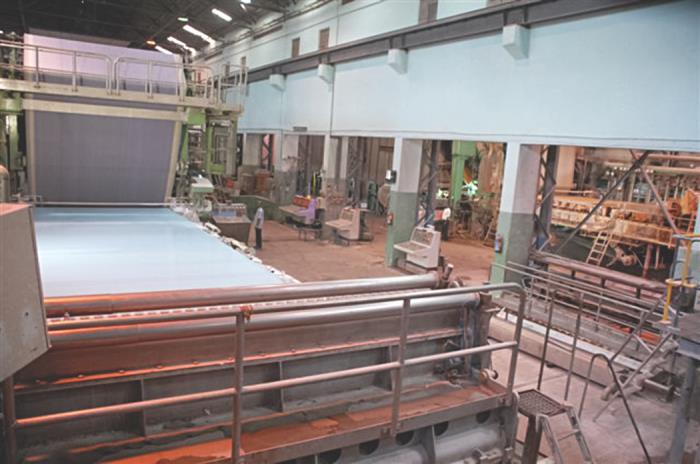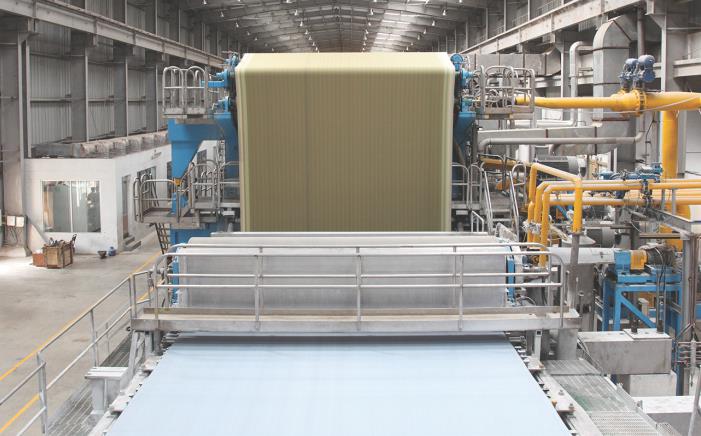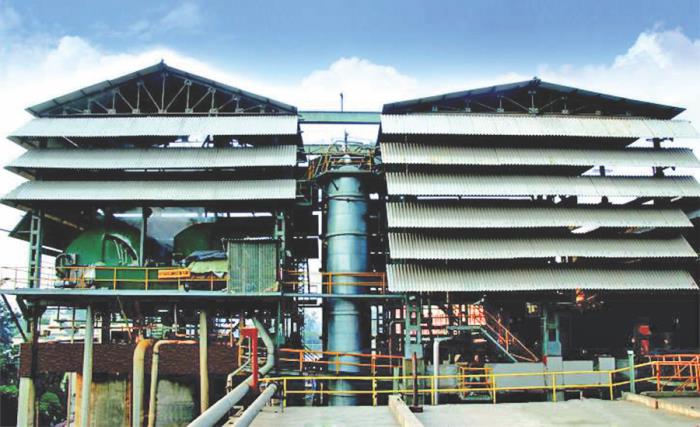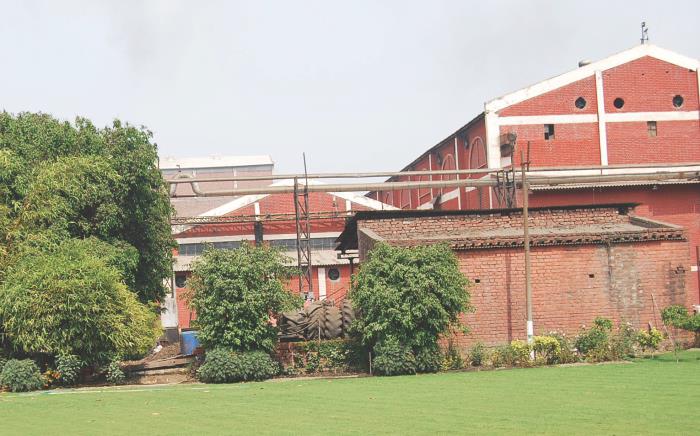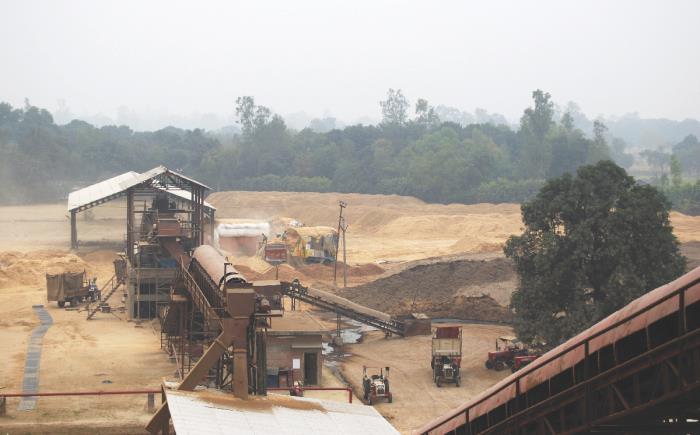
Use of paper dates back to the early second century A.D., and despite the rise of electronic media, computers and the Internet, humankind has not lost its love for this versaatile material. Still, many prefer hand writing a letter to sending an e-mail message, as a handwritten letter is intimate and can show feelings. Paper is here to stay.
However, not many of those who use paper care to understand the difficulties that pulp and paper companies face in producing pulp, paper and other cellulose-based products. In India, especially, production of paper and paper board entails enormous challenges – ranging from procurement of raw materials, energy and water to facing the harsh criticism coming from environmental groups and observing a number of complex laws.
The biggest challenge facing pulp and paper companies in India is procurement of fibrous raw materials. India does not have an industry-friendly forestry policy and so mills cannot get access to forest land; they are not even allowed to use a part of the huge track of wasteland for growing trees, whereas the situation is much better in other paper-producing countries across the world. As availability of forest-based raw materials, such as wood and bamboo, in the country is rather limited, pulp and paper companies have to depend on imported pulp. They have also started importing wood chips. Even waste paper is imported. These companies incur a huge transportation cost in shipping wood chips and other raw materials from various countries. As a result, the fortunes of the industry depend to a great extent on the foreign-exchange rate. Carrying on paper business in India is like walking on a tight rope without the cushy mattress underneath.
On the positive side, demand for paper and paper board has been increasing, which has helped offset the rising cost of production. This spurt in demand for paper and paper board stems from India’s all round industrial development and its rising literacy rate. Over the last five years, many paper companies went for major modernisation and expansion.
However, it may be mentioned that in the initial years of expansion, price of writing and printing paper went down and that it was in the recent past that the price of paper stabilised. Paper board production looks to be heading the same way as paper production. Expecting huge profits in this segment of the industry, many companies have gone for modernisation and expansion. In 2013, ITC started a new machine and Emami ordered for a new board machine. Also, Tamil Nadu Paper Limited set aside a sum of Rs 1,200 crores for further expansion and The West Coast Paper Mills Limited is planning to install a state-of-the-art machine. Besides, Rainbow Papers has invested in a board machine, which is expected to start in 2014. Will this expansion destabilise the price of paper board in the country? It is anybody’s guess.
Acquisition of some Indian companies by foreign industrial giants has also set a new trend in the Indian pulp and paper industry. Consider for example the recent acquisition of The Andhra Pradesh Paper Mills Limited by International Paper and Ruby Macons Limited by MWV.
As we already know, the global pulp and paper industry is dominated by North America (US and Canada), Northern Europe (Finland, Sweden and North-West Russia) and Asia (China, Indonesia Japan and South Korea). India’s pulp and paper industry accounts for just around 1.6 per cent of the world’s production of paper and paper board. Besides, India’s per capita consumption of paper is around 10 kg. In contrast, China’s per capita consumption of paper is approximately 60 kg. and some of the developed countries’ per capita consumption is approximately 300 kg. India’s paper industry continues to be an unorganised sector of the economy, and it is difficult to know the exact size of the India paper market. According to the production figures released by the government, India’s annual paper production is 12 million tons, but the estimated production is around 16 million tons. A small increase of 1 kg. in per capita consumption of paper leads to an increase of 1.2 million tons of paper!
India’s paper and paper board industry thus has unlimited scope for further growth. Judging by the investments paper manufacturers have made in modernisation and expansion so far, India’s pulp and paper industry is well on its way to having a strong presence in Asia.
Based on different parameters for excellence, Paper Mart has selected top ten pulp and paper companies in India and considers them in detail. Let us look at them one by one.
Which companies are the biggest players in the Indian pulp and paper industry? To find the answer to this question, we collated information about the top pulp and paper companies in India. The picture we gained from this collation is surely interesting. Let us take a look at it.
The tables given below highlight how Indian pulp and paper companies fare on certain key parameters, such as production, installed capacity, turnover, net profit and growth rates of net profit and turnover.
INDIAN PULP AND PAPER INDUSTRY – PRODUCTION

INDIAN PULP AND PAPER INDUSTRY – INSTALLED CAPACITY

INDIAN PULP AND PAPER INDUSTRY – TURNOVER

Ballarpur Industries Limited
Established: Unit Ballarpur: 1952
——————Unit Bhigwan: 1997
——————Unit Sewa: 1994 (takeover by BILT)
——————Unit Ashti: 1991
——————Unit Sabah Forest Industries (SFI): 1985
——————Unit Shree Gopal: 1936
——————Unit Kamlapuram: 1975
Headquarter: Gurgaon, Haryana
Mills:————Unit Ballarpur: District Chandrapur, Maharashtra
——————–Unit Bhigwan: District Pune, Maharashtra
——————–Unit Sewa: District Koraput, Orissa
——————–Unit Ashti: District Gadchiroli, Maharashtra
——————–Unit Sabah Forest Industries (SFI): Sabah, Malaysia
——————–Unit Shree Gopal: Yamuna Nagar, Haryana
——————–Unit Kamlapuram: District Warangal, Andhra Pradesh
Installed——–2012-13
capacity:——-Paper : 969,568 MT Rayon Grade Pulp : 98,550 MT
Production:—Paper: 834,050 MT Pulp (self-consumption): 376,799 MT Rayon Grade Pulp: 80,859 MT
Financials
Turnover:——2012-13: Rs. 4,854.81 crores
CSR activities with regards to environment, society and employee welfare:
• Livelihood creation and income augmentation – reached 12,500 families, enabled dependable livelihoods with farm-based and off-farm activities.
• Community mobilisation and women empowerment – impacted 15,000 women through 900+ self-help groups and co-operatives.
• Education for the underprivileged – improved standard of education of 140,000 children.
• Community-based health intervention – impacted 40,000 children and 18,000 mothers (pregnant and lactating).
• HIV/AIDS prevention – significantly contributed to the lives of 1,800 HIV positive people.
New developments:
• Upgrade of SFI fibre line from 120,000 TPA to 240,000 TPA along with sheeting machine to supply pulp to Unit Bhigwan.
• New fibre line of 300,000 TPA installed at Unit Ballarpur incorporating latest technologies such as single continuous digester, ODL, ECF bleaching process, single recovery boiler operation, etc.
• ETP up-gradation with MBBR and DAF technology at BPU.
• Producer gas plant (alternative source of fuel in place of furnace oil for lime kiln) at BPU.
• Modified and improved refining systems on paper machines.
• Up-gradation of ETP with cooling tower.
Product launch:
• C1S 50 GSM used for flexible packaging.
• High strength paper for paper carry bags.
• BILT Magna Print for NCR/ Thermal paper coating base.
• MG Poster for tea tags and tea bag pouches.
• MG Poster for adhesive laminations.
• BILT Fine Print for the publication segment.
• REB Chain Laid 95 GSM for export and domestic.
• Sunshine Deluxe Art Board 350.
• REB Chain Laid 95 GSM for export and domestic.
.
ITC Limited – PSPD
Enduring value
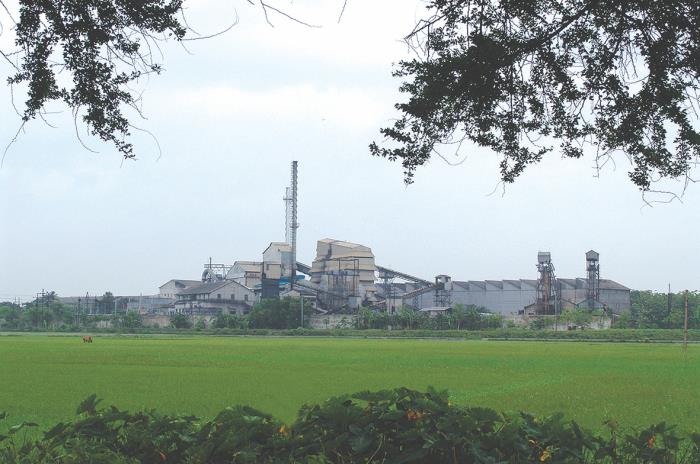
Established:—Started commercial production of——————–erstwhile Bhadrachalam Paperboards——————–Ltd. in 1979
Headquarter: Secunderabad, Andhra Pradesh
Mills:————Unit: Bhadrachalam, Andhra Pradesh
——————-Unit: Bollaram, Andhra Pradesh
——————-Unit: Kovai, Tamil Nadu
——————-Unit: Tribeni, West Bengal
Branch
locations:——New Delhi, Mumbai, Kolkata,——————–Chennai, Bangalore & Ahmedabad
Number of
employees:—3,500 approx.
Installed
capacity:
2012-13——Pulp: 235,000 MT Paper and Paperboard: 550,000 MT
2011-12——Pulp: 235,000 MT Paper and Paperboard: 450,000 MT
Production:
2012-13——Pulp: 298,000 MT Paper and Paperboard: 590,000 MT
2011-12——Pulp: 284,000 MT Paper and Paperboard: 570,000 MT
Financials:
Turnover:—-2012-13: Rs. 4,504.37 crores
——————2011-12: Rs. 4,129.79 crores
——————Growth Rate: 9.07%
Net Profit:—-2012-13: Rs. 963.95 crores
——————2011-12: Rs. 936.78 crores
——————Growth Rate: 2.9%
Net Worth:—2012-13: Rs. 4,958.27 crores
——————2011-12: Rs. 4,353.89 crores
CSR activities with regards to environment, society and employee welfare:
• Waste management: All manufacturing units of the paperboard and specialty paper division have already achieved nearly 100 per cent solid waste recycling by its usage for making products like lime, fly ash bricks, grey boards, egg trays, etc.; the procurement and recycling of about 120,000 tons of waste paper during the year has further consolidated the business’s overall positive solid waste recycling footprint.
• Social and farm forestry: ITC’s pioneering social and farm forestry initiatives have added more than 17,000 hectares of plantations during 2012-13 and cumulatively cover a total of over 142,000 hectares, including substantial tracts of private wasteland belonging to the tribal community. These initiatives have generated over 64 million person days of employment for rural households, including poor tribal and marginal farmers, besides increasing green cover.
• Cleaner production methods: ITC has pioneered elemental chlorine free (ECF) pulp and paper/paperboard in India, with the implementation of ‘ozone bleaching’ technology, a first in the country. ITC continues to invest in reducing air emission levels through adoption of cleaner technologies/fuels, monitoring of combustion efficiencies and investment in state-of-the-art pollution control equipment, such as plasma filters and electrostatic precipitators, etc. ITC units monitor significant air emission parameters, such as particulate matter (PM), nitrogen oxides (NOX) and sulphur dioxide (SO2), to ensure compliance with internal norms that are more stringent than regulatory requirements.
• Water management stewardship: ITC has undertaken several water conservation and harvesting initiatives to enhance its positive water footprint. These include adoption of benchmarked practices to achieve zero effluent discharges and enhance rainwater harvesting both within the company’s premises and in the catchment areas of the company’s operations. This not only reduces fresh water intake but also maximises ground water recharge, reduces run-off and provides water for farmers.
Area covered under plantations: During 2012-13, the business sold/distributed high quality saplings/seeds to farmers that enabled planting of over 110 million saplings in 17,500 hectares of plantations. With this, ITC’s bio-technology based research initiatives have cumulatively resulted in the planting of about 656 million saplings leading to significant wasteland development and greening of over 142,000 hectares.
Water and energy consumption per ton of paper produced:
Energy: Averaging around 1,027 KWH
Water:—Averaging around 43 KL
New developments:
• New paper machine with an installed capacity of over 100,000 tons p.a. at the Bhadrachalam plant.
• Investment in a new 25 MW turbine generator and 130 tons per hour (TPH) boiler to meet the energy requirements of the above expansion.
Product launch:
• Carte Lumina, brand for paperboard
• Nanobev, brand for paper cups
Raw material base:
• Wood: Around 52%
• Imported pulp: Around 27%
• Waste paper: Around 21%
.
Tamil Nadu Newsprint & Papers Limited (TNPL)
Consistent growth and continued excellence
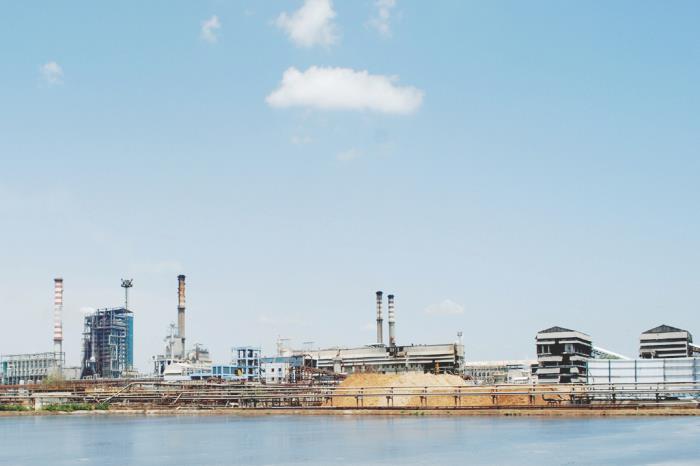
Established:—TNPL was established by the government——————–of Tamil Nadu in 1979
Headquarter: Chennai, Tamil Nadu
Mill:————–Kagithapuram, Karur District, Tamil Nadu
Branch
locations:—–Ernakulam, Hyderabad, Bangalore, Mumbai,——————-New Delhi, Kolkata and Ahmedabad
Number of
employees:—1,976
Installed
capacity:——Paper: 400,000 MT
Production:
2012-13——-371,637 MT
2011-12——-343,306 MT
Financials:
Turnover:—–2012-13: Rs. 1,881.18 crores
——————2011-12: Rs. 1,538.99 crores
——————Growth Rate: 22.23%
Net profit:—-2012-13: Rs. 91.48 crores (after tax)
——————2011-12: Rs. 108.94 crores (after tax)
——————Growth Rate: (16)%
Net worth:—2012-13: Rs. 1,035 crores
——————2011-12: Rs. 971 crores
CSR activities with regards to environment, society and employee welfare:
TNPL has drawn up a well-laid CSR policy. The CSR policy aims to promote economic, social, environmental and cultural growth of the community at large in an equitable and sustainable manner. As a policy, the Company has decided to spend approximately 3 per cent of its profits of the previous year for CSR activities in the subsequent year. The Company has spent Rs. 3.71 crores in 2011-12 and Rs 5.36 crores in 2012-13 on CSR activities
Area covered under plantations:
About 91,711 acres are covered under plantation schemes involving 17,021 farmers as on March 2013
Water and energy consumption per ton of paper produced:
Power:——2012-13: 1522 units
—————-2011-12: 1451 units
Water:——2012-13: 55KL
New developments:
• Under the ‘Lime Sludge and Fly Ash Management’ plan, the Company has set up a 600 TPD cement plant on the factory campus to convert the waste materials, lime sludge and fly ash generated in the process of manufacture of paper into high grade cement. The plant is being operated on a commercial basis from April 2013.
• A deinking plant of 300 TPD has been set up and the plant is producing higher quality de-inked pulp since July 2013. The in-house power generation capacity has been increased from 81.12 MW to 103.62 MW.
• A 100 TPD WGCC plant and 200 TPD PCC plant are being set up within the mill premises on BOO basis. The WGCC plant will become operational from November 2013 and the PCC plant from April 2014.
Export markets:
The Company exports about one-fifth of its production to over 40 countries across the globe from Australia to North America.
Future plans:
To achieve the next phase of growth, TNPL has embarked upon setting up a state-of-the-art multilayer coated board plant of a capacity of 200,000 TPA as a green field project, in a new location at Trichy District, Tamil Nadu. The Company is in the process of acquiring lands for the project and likely to place orders for the machine by January 2014. This will enable TNPL to make a foray in the growing high-end multilayer board segment. The project is scheduled for completion in March 2016.
Raw material base:
TNPL produces high quality paper using bagasse pulp, hardwood pulp and recycled fibre (DIP). The pulp mix varies depending on the variety of paper produced. On average, bagasse pulp constitutes 55 per cent, hardwood pulp 35 per cent and de-inked pulp 10 per cent.
.
JK Paper Limited
Creating lasting impressions
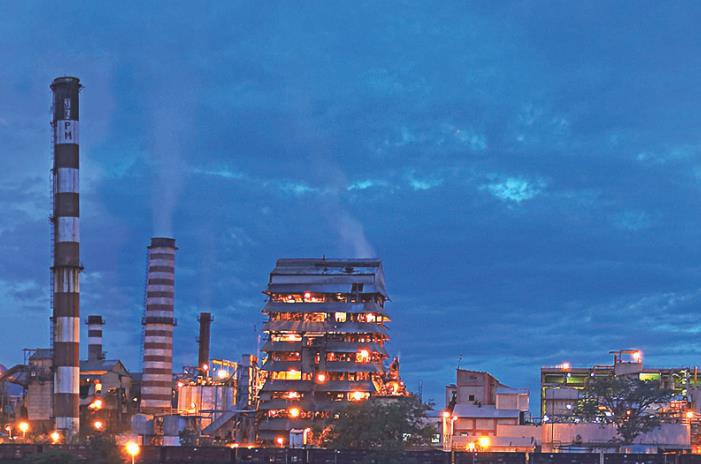
Headquarter: New Delhi
Mills:————JK Paper Mills: Jaykaypur, Rayagada,——————-Odhisa Central Pulp Mills:Songadh, Gujarat
Branch
offices:——–New Delhi, Kolkata, Mumbai and Chennai
Installed
capacity:——290,000 MT
Production:—2012-13: 292,582 MT
Financials:
Turnover:—–2012-13: Rs. 1,721.38 crores
——————2011-12: Rs. 1,557.10 crores
——————Growth Rate: 10.55%
Area under plantation:
2012-13: 11,300 hectares
Cumulative till date: 101,500 hectares
Steps towards environment, society and employee welfare:
• The Company has made continuous efforts to reduce use of water and energy. The waste water generated during production is recycled and reused thus minimising fresh water consumption.
• Adoption of modern technology combined with process innovation and continuous improvement through kaizen has led to significant conservation of natural resources besides reducing emission.
• Aggressive up-scaling of plantation efforts in recent years.
• The adult literacy model was adopted to spread literacy in nearby villages.
• Adopted ITI, Ukai under the PPP scheme in Gujarat.
• Self-help groups were initiated to generate income through different activities like binding, phenyl making, spice processing, etc.
• To carry out community development initiatives systematically, an NGO “SPARSH” has been formed.
• Basic health services, including free medicines to ST and SC people through health camps, have been organised in nearby villages at regular intervals.
Major developments:
• The massive expansion programme that was initiated in the recent past has been completed and commercial production has started. This programme includes 215,000 TPA pulp mill and 165,000 TPA paper machine apart from 55 MW power blocks with all requisite auxiliaries.
Product launch:
The new brands launched in the office documentation segment are JK C Max and JK Max.
Export markets:
Many countries spread across South Asia, Middle East, Africa and Europe
Future plans:
The Company will grow in line with market growth rates in its three major product segments viz. office paper, packaging board and coated paper.
.
The West Coast Paper Mills Limited
Your partner in progress…
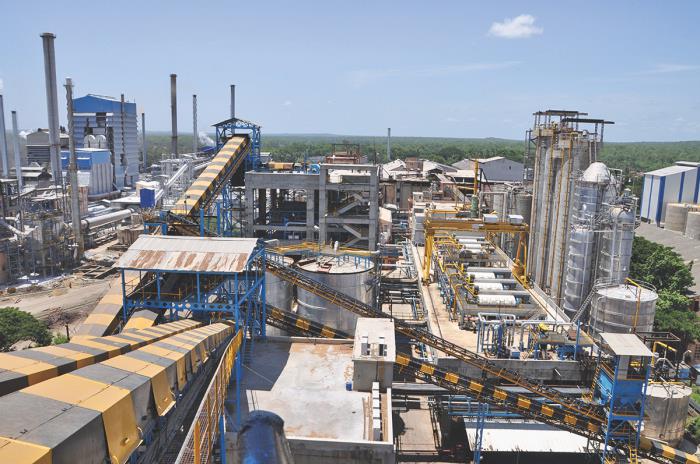
Headquarter: Bangalore, Karnataka
Mill:————-Dandeli, Karnataka
Branch
locations:—–Chennai, Kolkata, Mumbai and New Delhi
Number of
employees:—2,414
Installed
Capacity:——320,000 MT
Production:—2012-13: 317,808 MT
——————-2011-12: 308,230 MT
Financials:
Turnover:—–2012-13: Rs.1,499.07 crores
——————-2011-12: Rs. 1,322.77 crores
——————-Growth Rate: 13.33%
Net profit:—–2012-13: Rs. 18.13 crores
——————-2011-12: Rs. (33.56) crores
——————-Growth Rate: 154.02%
CSR activities with regards to environment, society and employee welfare:
• Support to rural communities: Under contract for the farming model, clonal plantation programme continued to progress with the production of more than 75 lacs clonal eucalyptus and subabul saplings and subsequent planting of the quality clonal planting stock on farmers unproductive/barren land covering an area of 3,300 hectares during 2012. Besides, the Company also distributes 2 million quality casuarina seedlings to the farmers in the Cuddalore (AP) region. The high rate of survival and growth of clonal plantations has led to improved productivity of wood biomass and higher returns to farmers, resulting in a growing demand for clones.
• Certifications: The Company is certified to ISO 14001 (2004) international standard by Det Norske Veritas, the Netherlands. The validity of this certification is up to January 2015. The Company stands committed to continually improve upon the implemented EMS on its existing site using the best available technology and ensure full compliance with relevant environmental enactments.
• Caring for total stakeholders: A highly vigilant and responsive welfare cell takes care of the welfare needs of the employees and their families round the year – welfare activities such as centrally monitored colony maintenance of roads, lighting, water supply, drainage and sanitation.
• Social and inclusive development activities: Through the Dandeli education society, the Company’s educational outstretch, quality education has been made available to students of Dandeli and the surrounding areas right from the nursery level to the post-graduate level.
• Supply of portable drinking water: The Company partnered with The Energy Research Institute (TERI), Panjim; University of Rhode Island, USA; and Bangurnagar Degree College, Dandeli, to carry out long-term tests of Riverbank Filtration (RBF) technology to provide good quality drinking water from Kali River for some of the villages situated on the river bank.
Area covered under plantations:
As of now, a 44,056 acre area is under contract for farming with crop of different ages, which is duly certified by (FSC) Forest Stewardship Council, and hereafter every year 10,000 acres of certified plantation will be added.
Water and energy consumption per ton of paper produced
Electricity:
2012-13: 1,272 KWH
2011-12: 1,258 KWH
New developments:
• Cycling chest of PM2 will be bypassed. This will save power of one agitator and pump.
• Correction of steam and condensate system of PM 2.
• Pumping of Dhot condensate from pulp mill to power house to save heat and power.
• Replacement of SP#4 under layer chest no. 5 and in PM4 under layer and filler layer machine chest no. 2 agitator to be replaced with energy efficient ones.
• Replacement of existing coarse screen of filler layers Turbo 600 at stock preparation V and filler layer chest no. 1 pump to be replaced with efficient ones.
• Multiple rewound motors (16 Nos.) to be replaced by new efficient motors.
• Bypassing intermittent pulp storage tower of old pulp mill to avoid pumping agitation to save power.
• Changing stock pumps of PM 2 and 3 by optimum capacity and efficient pumps.
• Stoppage of 1 stock refiner at PM 3 by using refining enzyme.
• Making of folding box board using mill pulp and BCTMP softwood pulp in neutral sizing at around 5.8-6.0pH. This is a high value-added product of good commercial value.
• Introduction of refining enzyme max treat 0I-45 resulting in the conservation of valuable energy with increased ash in the final paper leading to the conservation of the invaluable fibre.
Exports markets:
Export of paper, paperboard and duplex board 10,103 MT, worth Rs. 49.07 crores (FOB), in 2012-13
Future plans:
• Utilisation of ETP sludge (paper machine) in the filler layer of Duplex Board resulting in effective cost savings.
• Various alternate raw materials are being studied in order to cope with the ever increasing demand for paper and at the same time optimise the pulping conditions vis-à-vis bleach chemical demand in order to have a better insight as to the quality of the raw materials.
• Separate pulping of the Knotter rejects that are generated daily leading to the conservation of active alkali and at the same time maintaining the strength as compared to mixed pulping with the regular raw materials.
• Bleaching at higher temperature the DHT stage with a lesser CLO2 as compared to the regular bleaching leading to reduced COD and maintaining of viscosity.
Raw material base:
Pulpwood and bamboo
.
Century Pulp and Paper
Enduring value
Established:—1984
Headquarter: Mumbai, Maharashtra
Mill:————–Lalkua, Dist. Nainital, Uttarakhand
Branch
locations:——Noida, Mumbai and Kolkata
Number of
employees:—-Staff – 776; Workmen – 2055
Installed
capacity:——-Paper, Tissue and Board: 413,810 MT
——————–Rayon Grade Pulp: 31,320 MT
Production
Paper, Tissue and Board:
2012-13: 242,906 MT
2011-12: 154,252 MT
Rayon Grade Pulp:
2012-13: 33,995 MT
2011-12: 28,573 MT
Financials
Turnover:——2012-13: Rs. 1,282 crores
——————–2011-12: Rs. 870 crores
——————–Growth Rate: 47.35%
Net profit:——2012-13: Rs. (419) crores
——————–2011-12: Rs. (137) crores
——————–Growth Rate: (205.84)%
CSR activities with regards to environment, society and employee welfare:
• Expansion and modernisation of the existing ETP plant.
• Upgradation of ESP to improve ambient air quality.
• Ground leveling of primary and junior high school near the surrounding area for development of nursery.
• Development of nurseries and plantation.
• Charitable dispensary at Bindukhatta and regular medical camps.
• Regular fogging in surrounding areas for malaria/dengue prevention. Complete sanitisation of bore well through auto chlorination.
• Installation of water cooler at Lalkua Tehsil and railway station.
• Installation of hand pumps at nearby schools.
• Provided teacher for a nearby school.
• Adoption of Ghoranala primary school to make it a model school by providing complete infrastructure.
• Summer camp for children.
• Blanket distribution to poor in winter.
• Organised a free uric acid check-up camp.
• Relief provided for the Uttarakhand disaster.
• Renovation of park in Lalkua town.
Area covered under plantations:
Three lacs seedlings distributed to local farmers at subsidised cost to promote plantation this year
Water and energy consumption per ton of paper produced
Water: 57 m3
Steam: 8.37 tons
Power: 1,291 KWH
New developments:
• Expansion of bagasse pulping capacity by 100 TPD by installing a continuous digester and carrying out modifications in the existing plant.
• Expansion and modernisation of the ETP plant.
Product launch:
• Amber Maplitho
• Imperial Print
• Star Print
• Green Copier (70 GSM)
• High Strength Ledger Paper
• Superia Fold
• Superia Grafik
• Dura Fold
• Omega
• Opti Fold
• Induction Wad
• Classico
• Band Paper
Export markets:
Indian Sub Continent, Middle East, Europe, Africa and North America
Future plans:
Innovation and new product development for high value added applications and utilising the benefits of the different cellulose options.
Raw material base:
Wood, bagasse and recycled fibre are used to make writing and printing paper, copier, industrial and specialty paper, packaging board and tissue.
.
The Andhra Pradesh Paper Mills Limited
Established: The mill was established as Carnatic Paper Mills Ltd. in 1920, which was taken over by The Andhra Paper Mills Co. Ltd., in 1929. The Andhra Pradesh Paper Mills Ltd. (APPM) was incorporated on 29th June 1964 by taking over the assets of the The Andhra Paper Mills Co. Ltd.
Headquarter: Hyderabad, Andhra Pradesh
Mills:————Unit APPM: Rajahmundry, East Godavari——————–District, Andhra Pradesh
——————–Unit: Kadiyam, East Godavari District,——————–Andhra Pradesh
Branch
locations:——Gurgaon, Kolkata, Mumbai, Bengaluru, Ernakulam, Chennai
Number of
employees:—-Over 3,000
Installed
capacity:——-Pulp: 221,100 MT
——————–Paper: 241,000 MT
Production:
2012-13 (15 months)
Pulp: 217,632 MT
Paper: 258,201 MT
2011 (9 months)
Pulp: 139,876 MT
Paper: 160,565 MT
Financials
Turnover:——2012-13: Rs. 1,291.64 crores
——————–2011-12: Rs. 623 crores
——————–Growth Rate: 24.39%*
Net profit:——2012-13: Rs. (23.7) crores
——————–2011-12: Rs. (97.81) crores
——————–Growth Rate: 75.77%
Net worth:—–2012-13: Rs. 456.81 crores
——————–2011-12: Rs. 480.52 crores
Above figures for 2012-13 are for 15 months and 2011-12 are for 9 months.
* Calculated on pro-rata basis (9 months)
CSR activities with regards to environment, society and employee welfare:
• Disaster management: The company, in consultation with the employees, has designed an employee engagement system whereby the employees volunteer towards community initiatives and get into action during disasters and natural events such as cyclones, flood and fire accidents.
• Project Kshitija: APPM provided low maintenance solar energy lamps to the students of 10th standard to ensure they are well equipped to study during night hours. APPM reached out to 1,000 students of Zilla Parishad Schools in 7 districts (Andhra Pradesh) covering the forest region where the electricity shortage is a huge deterrent to child education. Results shown by the school students where the lamps were distributed was 96 per cent in the recent examinations as against 63 per cent in the previous year.
• Watershed management: Under sustainability and community development, APPM constructed a check dam at Mamidilova village near Visakhapatnam. This has resulted in a substantial increase of cultivated and irrigated area from just 800 acres to 5,000 acres and the initiative is likely to bring economic and social up-gradation to the farmers in the belt. Over a period of four years, it is estimated that casuarina cultivation would increase from 20,000 MT to 70,000 MT along with cash crops and paddy, resulting in an increase in the income of farmers in the region by about Rs. 15 crores.
• Project EKKO-talz: Project EKKO-talz helps local artisans living in the farm forestry areas, working on age-old, craft making traditions, to offer innovative craft products for the modern consumer and sustain the art.
• Safe water project: APPM has also made provision of safe drinking water to the villagers around Rajahmundry. The households in these areas are provided protected water supplied through pipelines and where necessary, also through tankers. APPM recognised that community members in Venkatanagaram village on the banks of river Godavari were prone to waterborne diseases. Two overhead structures have been erected, one for community water usage through reverse osmosis (RO) and another to ensure safe drinking water.
• Women empowerment: A vocational training initiative is on-going at Mallyapeta and Palacheerla villages of Rajanagram Mandal to train women not only in stitching and embroidery, but also to impart value education to enable them to live a better life. Almost 600 students have already graduated under this livelihood support programme and enhanced their skills and capabilities.
• APPM (EM) high school: The Company established APPM (EM) high school in 1967. The school has been able to reach out to 75 per cent of the total population of the nearby villages. The school aims to provide quality education at nominal cost for the less privileged. Apart from academics, the school is working towards the overall development of children. A total of 1,300 students are currently studying this prestigious school.
• Project Green Wave: The Company launched green wave campaign at Rajahmundry, which motivated several children to pledge towards plantation and protection of trees and understand its use towards improving the environment. The campaign also included conducting a series of skits for more than 1,000 families enabling them to understand the importance of efficient use of energy and protecting the environment.
New developments:
• In September 2013, the mill commissioned a new Bielomatick A4 sheeter at its Rajahmundry unit. The new equipment will enable the mill to increase the conversion capacity of branded copier paper by 90,000 MT per year. The state-of-the-art sheeting line installed at the new facility is designed to convert paper reels into A4, A3 and FS (Foolscap) size products. The automated process installed in the facility has advanced ream wrapping, carton packing and palletising capabilities. The extended facility was built in 13 months with an investment of over Rs. 100 crore.
• In October 2012, the mill achieved the milestone of planting 1 billion trees in India through its farm forestry initiative. The total land cultivated under this project is spread over a vast area of over 150,000 hectares in 9 districts of Andhra Pradesh covering Visakhapatnam, Srikakulam, Vizianagaram, East Godavari, West Godavari, Krishna, Guntur, Prakasam and Nellore districts. This state hosts the two mills of the company. Around 50,000 small farmers earn their livelihood through this initiave of APPM.
Export markets:
At APPM, exports are undertaken through a network of indenting agents across 20 countries. The company achieved a volume growth of 147 per cent in exports. The volume for the last fiscal year ended March 31, 2013, was 37,819 MT (for a 15-month period) as against 15,283 MT in the financial year ended December 31, 2011 (9-month period).
.
Rainbow Papers Limited
Generating wealth out of waste
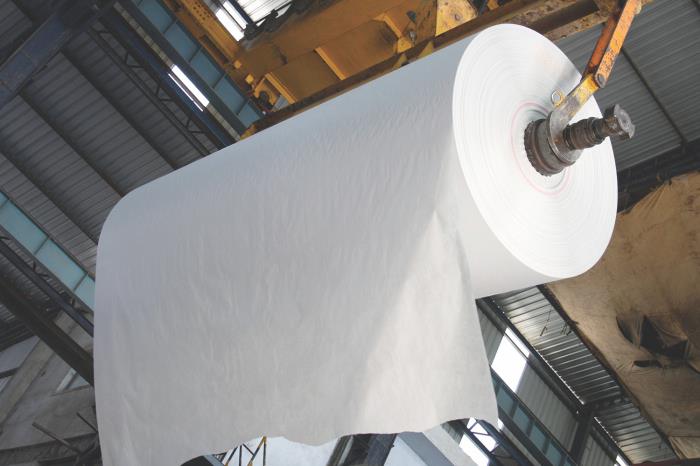
Headquarter: Ahmedabad, Gujarat
Mill:————–Kalol-Mehsana Highway, Gujarat
Branch
locations:——New Delhi and Mumbai
Number of
employees:—1,222 approx.
Installed
capacity:——-2012-13: 305,000 MT*
——————–2011-12: 183,000 MT
(*122,000 tons capacity added in March 2013)
Production:—2012-13: 149,251 MT
——————-2011-12: 139,596 MT
Financials:
Turnover:——2012-13: Rs. 900.05 crores
——————-2011-12: Rs. 601.25 crores
——————-Growth Rate: 49.7%
Net profit:—–2012-13: Rs. 61.14 crores (after tax)
——————-2011-12: Rs. 46.04 crores (after tax)
——————-Growth Rate: 32.8%
Net worth:—-2012-13: Rs. 441.67 crores
——————-2011-12: Rs. 330.09 crores
CSR activities with regards to environment, society and employee welfare environment:
The Company in its continued devotion towards protecting the environment has taken up two projects for the disposal of the waste generated by the paper plant as given below:
• Manufacturing of bricks out of the fly ash generated from the power plant.
• Manufacturing of recovered fibre sheets from fibre that is being segregated in the process of manufacturing. These fibre sheets are used in making furniture, sheds, etc.
Society:
The Company has donated TV and Video CD player to Jhulasan, Vadu and Rajpur Gram Panchayats in Mehsana District for the benefit of children studying at various schools in the said area. The Company has organised blood donation camps. The Company has also conducted free medical checkup camps for people in the nearby vicinity. The Company has made presentation to the state authority and received in principle approval for the broadening of the road from Rajpur to Jhulasan, which will facilitate smooth transportation.
Employee welfare:
Awards have been given to the workers for encouraging productivity and efficiency at factory and create harmonious industrial relations. The company organises free medical checkups.
Area covered under plantations:
Around 120,000 m2
Water and energy consumption on per ton of paper produced
Water: 15 m3
Energy: 544 unit
New developments:
Installation of Paper Machine-8 and 20MW Captive Power Plant
Product launch:
Copier Paper, Maplitho, Glazed Paper, LWC, Coated Paper, Newsprint, etc.
Export markets:
Africa, Middle East, South East Asia, U.S.A., U.K., France, Indonesia, Sri Lanka, Egypt and Bangladesh
Future plans:
To enhance the production capacity from 305,000 MTPA to 466,700 MTPA
Raw material base:
Waste paper and Ready pulp
.
Seshasayee Paper & Boards Limited
Tested by time – trusted by all
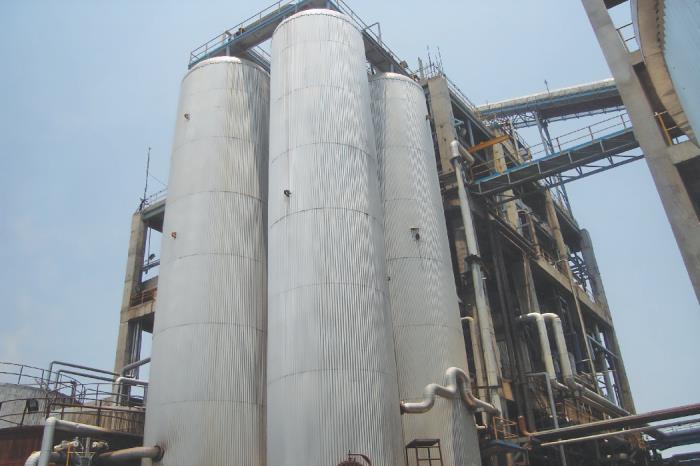
Headquarter: Namakkal District, Tamil Nadu
Mill:————–Unit Erode: Namakkal District, Tamil Nadu
——————-Unit Tirunelveli: Namakkal District, Tamil Nadu
Branch
locations:—–Chennai, Ernakulam, Bangalore, Hyderabad,——————-Mumbai, Kolkata and New Delhi
Number of
employees:—1,295
Installed
capacity:——2012-13: 175,000 MT
——————-2011-12: 115,000 MT
Production:—2012-13: 169,438 MT
——————-2011-12: 118,282 MT
Financials:
Turnover:—–2012-13: Rs. 880.77 crores
——————2011-12: Rs. 639.12 crores
—————––Growth Rate: 37.81%
Net profit:—–2012-13: Rs. 20.51 crores
——————2011-12: Rs. 34.10 crores
——————Growth Rate: (39.85)%
Net worth:—–2012-13: Rs. 363.24 crores
——————-2011-12: Rs. 310.61 crores
CSR activities with regards to environment, society and employee welfare:
Drinking water facilities: Daily supply of 6,000 m3 of protected and treated drinking water through 320 drinking water taps installed by the Company and five overhead tanks constructed by TWAD Board and maintained by local panchayats.
Community health centres:
• Four community health centres at nearby villages – with full-time qualified physician – para-medical staff – medicines provided free of cost.
• Conducting yearly free eye camps, blood donation camps, diabetic check-up, camps, etc., for public in the neighbourhood.
• Provision of illuminators on highways.
• Gifted 2.5 acres of land for ESI hospital and staff quarters for the benefit of employees and the public in the neighbourhood.
• Provided 7.5 acres of land for the State Electricity Board substation and staff quarters for the benefit of public in the neighbourhood.
• Provided accommodation for public library, UCO bank, post offices (two), ATMs (two), Tailoring and Embroidery Training Centre, creche and reading room.
Educational activities
• Running three schools
• Giving technical and financial support to a polytechnic (“Seshasayee Institute of Technology”)
• Gifted 2 acres of land for constructing Government High School at Pappampalayam village for the benefit of public in the neighbourhood.
Area covered under plantations:
Up to Aug 2013: 54,747 acres
During the current financial year: 9,612 acres
Water and energy consumption per ton of paper produced
Water: 65m3
Power: 1,595 KWH
Steam: 8.6 tons
New developments:
• Takeover and amalgamation of the sick unit – capacity increased from 115,000 MT to 175,000 MT.
• Introduction of shrink packing for bundles
Product launch:
Developed the following new products and launched in the market:
• Diary paper
• Bulky paper
• Drawing paper
• Creamlaid (UV)
Export markets:
• Presently exports to over 35 countries mainly in Asian and African markets and few European markets.
• Since 2012, we have re-entered various new markets viz. Madagascar, Chile, South Korea, Paraguay, Senegal and Gambia.
• We have also re-entered many countries viz. Ivory Coast, Bulgaria, Cameroon, Zimbabwe, Greece, Yemen, Kuwait, Saudi Arabia and Eritrea.
• We have also started exporting stationery items to USA.
Future plans:
• Enhancing paper making capacity by 45,000 MT at unit Erode
• Enhancing paper making capacity by 30,000 MT at unit Tirunelveli
Raw material base:
Wood: 75-80%
Baggasse: 25-30%
.
Trident Limited
Being different is normal
Established:—1993
Headquarter: Sanghera, Barnala, Punjab
Mill:————–Dhaula, Barnala, Punjab
Branch
locations:——Mumbai, Bhopal, Gurgaon, Ludhiana &——————–Chandigarh
Number of
employees:—1,147
Installed
capacity:
2012-13——–Paper: 175,000 MT
——————-Pulp: 119,132 MT
2011-12——–Paper: 175,000 MT
——————-Pulp: 116,704 MT
Production
Paper———–2012-13: 152,719 MT
——————-2011-12: 146,416 MT
Financial*
Turnover:——2012-13: Rs. 724.8 crores*
——————–2011-12: Rs. 653.4 crores*
——————–Growth Rate: 10.93%
——————–* Turnover for paper business only.
Net worth:—–2012-13: Rs. 706.3 crores
——————-2011-12: Rs. 650.6 crores
* Financials are including non-paper businesses under Trident Limited
CSR activities with regards to environment, society and employee welfare:
The latest CSR initiative is the Trident academic scholarship worth Rs. 15 lakh, which is being given to deserving candidates based on their performance in the online test being conducted by Trident. The scholarship distribution will happen during Paperex.
Water and energy consumption per ton of paper produced:
Power:——–2012-13: 981 KWH
——————2011-12: 1,029 KWH
Water:——–2012-13: 48m3
—————–2011-12: 54m3
New developments:
• Eco-friendly copier for the US market.
• Premium copier development under the brand name Trident royal touch.
• Premium maplitho development under the brand name Platinum line.
• ARSR paper development, i.e., stiffener for soap wrapping.
• Introduced new generation chemicals to enhance printing and runnability of paper.
• Installation of blow heat recovery system in wood pulp mill for recovery of waste heat after the cooking process.
• Closed hood system for PM 1 to optimise steam consumption per ton of paper.
• Addition of rotary screen at SFL to reduce silica in black liquor.
• Introduction of cooking aid in the pulping process for soda reduction and better pulp quality, thereby reducing COD load.
• Introduced bio-oxidizing chemical for increasing paper machine efficiency and improving paper quality.
Product launch:
• Trident royal touch
• Stiffener for soap wrapping
• Drawing paper
Export markets: 18%
Future plans:
To constantly grow and have the brand acknowledged to become a preferred partner.
Raw material base:
Using eucalyptus and veneer waste from plywood industries for wood pulp and wheat straw as agro residue raw material for straw pulp. 50-80 per cent pulp is wheat straw and the rest is hardwood.
.
NR Agarwal Industries Limited
Established:—1975
Headquarter: Mumbai, Maharashtra
Mills:————Vapi, Gujarat, Sarigam, Gujarat
Installed
capacity:——-Paper: 170,000 MT
Production:
2012-13——–Newsprint: 32,578 MT
——————–Paper Board: 140,494 MT
2011-12——–Newsprint: 7,680 MT
——————–Paper Board: 131,426 MT
Financials
Turnover:——2012-13: Rs. 512.29 crores
——————-2011-12: Rs. 492.60 crores
——————-Growth Rate: 3.99%
Net profit:—–2012-13: Rs. 4.59 crores
——————-2011-12: Rs. 14.1 crores
——————-Growth Rate: (97.69)%
Water and energy consumption per ton of paper produced:
Electricity: 128 KWH
New developments:
• Application of hot insulation in turbine and boiler areas of power plant at newsprint manufacturing unit 2 to reduce heat loss to the atmosphere.
• Installation of 175 KVAR of capacitor banks at paper machine and pulp mill areas of duplex coated paper board unit 1 for improving the power factor to reduce electrical power losses.
• Use of flash steam from paper machine condensate tanks for cooking of starch at duplex coated paper board unit 1.
• Installation of blow down flash steam recovery system in boiler of duplex coated paper board unit 1 and the recovered steam is being used in De aerator thus reduction in L.P. steam consumption in boiler De aeartor and saving of coal.
• Installation of improved better efficiency marko make rotary joints in paper machine dryers of duplex coated paper board unit 1, thus improving the effectiveness of dryers and better condensate recovery.
• Repair and application of better type insulation at the boiler main bank area of duplex coated paper board unit 1, thus reducing the surface temperature and reduction in loss of heat.
• Installation of improved type marko make, rotary joints with siphon units in paper machine dryers of duplex coated paper board units 3 and 4, thus improving the effectiveness of dryers and better condensate recovery.
Export markets: During the year, the Company exported duplex board and realised Rs. 27.23 crores.
Future plans: The Company has set up a 300 TPD Newsprint/ Writing & Printing / Kraft paper project at Sarigam, Gujarat. The Company has received the consent from the Ministry of Environment and Forests for environment clearance and from the State Pollution Board. The Company is confident of commencing the production in 2013-14.
.
Emami Paper Mills Limited
Established:—1983
Headquarter: Kolkata, West Bengal
Mills:————Unit 1: Balgopalpur, Balasore, Odisha
——————–Unit 2: Dakshineswar, Kolkata, West Bengal
Number of
employees:—1,050 permanent employees (staff and worker)
——————-and 1,000 contract workers
Installed
capacity:—–2012-13: 145,000 MT
——————2011-12: 145,000 MT
Production:—2012-13: 145,862 MT
——————2011-12: 144,883 MT
Financials:
Turnover:—-2012-13: Rs. 499.89 crores
——————2011-12: Rs. 493.50 crores
Growth
Rate:———-1.29%
Net profit:—2012-13: Rs. 11.55 crores
—————–2011-12: Rs. 8.31 crores
—————–Growth Rate: 39%
Net worth:—2012-13: Rs. 291.24 crores
—————–2011-12: Rs. 202.67 crores
CSR activities with regards to environment, society and employee welfare:
Emami Paper focuses on promoting economic, social, environmental and cultural growth of communities in an equitable and sustainable manner.
• Health camps: The Company operates local first-aid centres and provides free healthcare services through which patients are provided ayurvedic, homeopathic and allopathic medication and treatment.
• Education: The Company provides infrastructural support to over 30 schools in the neighbouring villages covering over 2,500 students who are also provided with stationery and other accessories (desks, benches, fans and water filters, among others). Meritorious students are encouraged with regular scholarships. Besides, ongoing contributions are made to Friends of Tribal Society to educate the local populace.
• Construction of the Remuna College: At Emami Paper, education-focus is reflected in the fact that the Company developed the Remuna College located in Balasore and, also constructed a modern science block to enable students to enrich their skills and create value for society. Almost 2,300 students study daily at the Remuna College.
• Adoption of Fulkiari village: The Company adopted the Fulkiari village, comprising 200 villagers living in dilapidated, single-room tenements with no proper sanitation. The Company made a significant expenditure to provide sanitation facilities, insurance cover, potable drinking water (with water filters), bore wells, children education, medical and health camps and women self-employment avenues.
• Scholarship: The Company provided scholarships to meritorious students of Remuna Refugee Colony School, Baharda School, Hatiaganda U.P. School and Nuapadhi School, among several others, to motivate children to attend school.
• Paper distribution: The Company distributed free paper and exercise books to various schools. It supplied free paper to the prestigious local NOCCI magazine, Kosamba magazine, EXPO Souvenir and Jugashree Juganari (a monthly Oriya periodical) and Shakuntala Girls’ High School souvenirs.
• Community service: The Company invested in social infrastructure covering the installation and maintenance of tube wells, street lights and roads, sponsoring sporting activities, mass marriages, blanket distribution during winter and extending a helping hand to orphanages. The Company’s CSR activities made a visible impact in villages in the vicinity of its plant in Balasore (Odisha).
• Food for the poor: The Company provides free nutritious food to over 1,000 poor people daily.
Area covered under plantations:
The area covered inside the factory is 15.25 acres out of 50 acres. The total area covered under plantation both inside and outside is approximately 18.6 hectares till date.
Water and energy consumption per ton of paper produced:
Water: 19 m3
Energy: 855 KWH
New developments:
Installing 100,000 ton coated board capacity
Product launch:
Coated board to be launched by March 2015
Future plans:
Leveraging decades of rich experience, the Company expects to cover a broader spectrum of India’s paper industry by establishing a 100,000 TPA state-of-the-art value-added packaging paper manufacturing unit.
• The mill is being set up within the company’s existing Balasore infrastructure, optimising capital costs.
• The plant is expected to commence commercial production by March 2015 with projected optimum capacity utilisation in the first year itself.
Raw material base:
Waste paper
.
Kuantum Papers Limited
The paper makers
Established:—1980
Headquarter: Chandigarh
Mill:————–Village Saila Khurd, Distt. Hoshiarpur, Punjab
Number of
employees:—-1,367
Installed
capacity:
2012-13———Pulp: 110,550* MT
———————Paper: 148,500 MT
2011-12———Pulp: 110,550* MT
———————Paper: 48,500 MT
Production:
2012-13———Pulp: 73,683 MT
———————Paper: 100,218 MT
2011-12———Pulp: 71,258 MT
———————Paper: 95,383 MT
* includes RCF pulping
Financials:
Turnover:——-2012-13: Rs. 447.97 crores
———————2011-12: Rs. 398.14 crores
———————Growth Rate: 12.52%
Net Profit:——-2012-13: Rs. 12.81 crores
———————2011-12: Rs. 3.71 crores
———————Growth Rate: 245.28%
Net Worth:——2012-13: Rs. 76.67 crores
———————2011-12: Rs. 64.38 crores
CSR activities with regards to environment, society and employee welfare
• Environment: The Company is fully conscious of its environmental obligations. Apart from meeting all the guidelines of corporate responsibility towards environment protection (CREP), the Company has made extensive efforts to further reduce the environmental impact of its operations. The recent addition to such efforts are installation of a board manufacturing unit within the premises to utilise ETP sludge and a brick manufacturing facility to use boiler ash and lime sludge, by spending more than Rs. 100 lacs during the last year. Further, environmental management system (ISO 14001) has been implemented to ensure use of the best practices for environmental management. Research fellowships are granted to postgraduates in the relevant field to carry out research on environment and clean technologies for further improvement. The development and installation of lime kiln based on turbo spin flash calcination technology in the company for reusing the lime sludge is the outcome of environmental research being supported by the Company.
• Education: This is a focus area with a substantial budgeted spending towards education, in which we are running a high school, have adopted a government school and are promoting adult education.
• Agro forestry: The plantation department is actively involved in educating local farmers about issues relating to agro forestry.
Area covered under plantation: Approximately, 111 acres of the factory area is covered under eucalyptus plantation of which 15-20 acres is harvested and replanted every year. The Company has a plantation department that is equipped with the latest infrastructure and know-how to produce approximately 5 lacs clones every year.
Water and energy consumption per ton of paper produced:
Water: 73 m3
Power: 1,147 KWH
New developments:
• Installation of film size press on paper machine 4.
• Installation of top former on paper machine 4.
• Introduction of sized grades of paper including copier on paper machine 4.
• Commissioning of satellite plant for onsite manufacturing of PCC in collaboration with SMI, USA.
• 100 per cent substitution of talc and GCC with PCC on all paper machines. Kuantum Papers Ltd. is only agro-based paper mill in India to implement use of PCC.
• Implementation of the bar coding system.
• Installation of shrink bundling machine and reel stretch wrapping machine for improvement in packaging.
• ISO 9001-2008 certification of research and development division.
• Environmental management system (1S0 14001) certification.
• FSC chain of custody (CoC) certification for both paper and pulp to ensure use of responsibly harvested raw material.
• Installation of lime kiln based on turbo spins flash calcination technology.
• Installation of board manufacturing plant @ 12 MT/day for utilisation of ETP sludge.
• Upgradation of effluent treatment plant (ETP) by implementation of diffused aeration technology.
• Water consumption reduced to 73 m3/ton of paper from 77 m3/ton of paper.
• Installation of brick manufacturing facility for utilisation of boiler ash and lime sludge.
Product launch:
• Krest: Surface sized maplitho paper
• Kappa G: High quality creamwove paper
• Keon: Copier
Export markets:
Middle East, Iran and Sri Lanka
Future plans:
• Expansion of paper capacity to 450 TPD.
• Introduction of binary/ASA sizing on paper machines.
• Implementation of full technology of SMI to improve ash levels in paper.
• Installation of soft nip calendar on paper machine 4 to further improve paper surface properties.
• Installation of integrated cellulosic ethanol bio-refinery pilot plant based on rice straw.
• Upgradation and expansion of both agro and wood pulping street along with introduction of oxygen delignification system and ECF bleaching sequence.
• Installation of decanter centrifuge in the effluent treatment process for dewatering of secondary sludge.
Raw material base:
Agro residues: 50%
Hardwood: 25%
Imported pulp: 25%
.
Murli Industries Limited
To be a global player in paper market
Established:—1991
Headquarter: Nagpur, Maharashtra
Mill:————–Nagpur, Maharashtra
Number of
employees:—2,500+
Installed
capacity:——248,200 MT
Financials:
Turnover:—–2011-12: Rs. 332.71 crores
——————-2010 -11: Rs. 280.82 crores
——————-Growth Rate: 18.48%
Net Profit:——2011-12: Rs. (55.07) crores (PBT)
——————-2010 -11: Rs. (60.85) crores (PBT)
——————-Growth Rate: 9.49%
Above figures are for paper business only.
Area covered under plantations:
10.57 hectares
New developments:
Paper scanner installed in duplex unit (unit 1)
Product launch:
• Murli vibrant (duplex board with high stiffness and high bulk) – the SBS unit (unit 5)
• Star universal (hi-brite and high bulk duplex board) – the duplex unit (unit 1)
• Water (writing and printing paper) – the writing and printing unit (unit 3)
• Ice (writing and printing paper) – the writing and printing unit (unit 3)
• Snow (writing and printing paper) – the writing and printing unit (unit 3)
• Sapphire (news print paper)
• Platinum (news print paper)
Export markets:
Middle East, Bangladesh, Sri Lanka, Nepal and Africa
Future plans:
To increase the plant capacity and to introduce new products in market
Raw material base:
Waste paper based (all kinds of imported and indigenous waste paper are used)
.
Bindal Papers Limited
We are not just eco friendly, we are earth warriors.
Established:—2009
Headquarter: Muzaffarnagar, Uttar Pradesh
Mill:————–Muzaffarnagar, Uttar Pradesh
Branch
locations:—–New Delhi, Mumbai
Number of
employees:—550
Installed
capacity:——90,000 MT
Production:—2012-2013: 84,400 MT
——————-2011-2012: 83,148 MT
Financials
Turnover:—–2012-13: Rs. 376.73 crores
——————-2011-12: Rs. 369.66 crores
——————-Growth Rate: 1.91%
Net profit:—–2012-13: Rs. 3.33 crores
——————-2011-12: Rs. 2.06 crores
——————-Growth Rate: 61.65%
CSR activities with regards to environment, society and employee welfare:
• Fully equipped treatment centre with qualified doctors.
• Well maintained canteen for employees for hygienic food.
• Maintain all pollution norms.
• Strong monitoring of effluent drain by in-house and outside agencies.
• Direct purchase of sugarcane waste from farmers.
Water and energy consumption per ton of paper produced:
Water: 53 m3
Power: 1,250 KWH
New developments:
• Notebook manufacturing plant
• Tertiary treatment system to reduce TSS and COD of final effluent.
Product launch:
Notebooks
Export markets:
• Asia – Sri-Lanka, Nepal, Philippines and Malaysia
• Africa – Nigeria, Ghana, Ethiopia and South Africa
• Middle East – Egypt, Sudan, Iran, Afghanistan, Oman and Dubai
• Europe – Italy
Future plans:
• 400 ton solid liquor fired recovery boiler.
• New automatic A4 line.
Raw material base:
Agro waste
.
Sirpur Paper Mills Limited
In pursuit of excellence
Established:—1938
Headquarter: Gurgaon, Haryana
Mill:————–Adilabad District, Andhra Pradesh
Branch
locations:——Hyderabad
Number of
employees:—4,016 (2011-12)
Installed
capacity:——138,300 MT
Production:
Pulp:————2012-13: 80,152 MT
——————-2011-12: 94,606 MT
Paper:———-2012-13: 83,088 MT
——————-2011-12: 99,543 MT
Financials:
Turnover:—–2012-13: Rs. 365.20 crores
——————-2011-12: Rs. 400.23 crores
——————-Growth Rate: (8.75)%
Net profit:—–2012-13: Rs. (0.97) crores
——————-2011-12: Rs. (0.17) crores
——————-Growth Rate: (470.59)%
Growth rate: Growth rate is negative due to steep increase in the prices of raw materials, coal, power, etc., apart from shortage of power in Andhra Pradesh and the severe power cuts imposed on the industry in general.
Net worth: Rs. 172.85 crores
CSR activities with regards to environment, society and employee welfare:
Environment: The mill has gone for a new fibreline with the state-of-the-art technology consisting of two stage Oxygen Delignification, ECF bleaching, separate effluent treatment plant for the new fibreline effluent, installation of rotary lime kiln to recycle and reuse lime sludge, thus reducing solid waste disposal problem, using the treated effluent of the mill for irrigation purposes in the nearby village fields, reduction in the water consumption, reduction in power consumption and coal consumption, thereby reducing CO2 emissions, plantation of saplings in large areas in and around Adilabad district in AP, etc. The mill has also gone for the falling film evaporator system with a steam economy of seven, thus conserving steam and carbon emissions.
Educational initiatives:
• Provided scholarships to 85 students through the SPM Co-operative Society.
• Provided industrial training to about 150 students in the fields of engineering, technology and business administration for doing their project works in various branches from various colleges of Andhra Pradesh and other states, including BITS, Pilani, Goa and Hyderabad campuses.
• Provided six-month industrial training to polytechnic students of various branches from various polytechnic colleges of Andhra Pradesh.
• Provided notebooks worth about Rs. 10 lacs to students on subsidised rates.
Social forestry:
• As our drive for environment protection, the SPM has planted 200,000 plants on a 200-acre piece of land in the Adilabad district surrounding areas.
Area covered under plantations:
2012-13: 3,875 hectares
2013-14: 6,640 hectares
Water and energy consumption per ton of paper produced:
Water: 2011-12: 105 m3
2012-13: 95 m3
Energy: 2011-12: 1,810 KWH
2012-13: 1,753 KWH
New developments:
Some of the obsolete machines were scrapped and some were modernised.
Product launch:
On the verge of launching certain products in the coming years
Future plans:
Till now, the mill has been striving to consolidate its position. Developments will be planned from now onwards.
Raw material base:
2012-13: Wood: 191,332 MT (98.04%)
————Waste paper: 3,813 MT (1.96%)
.
Orient Paper and Industries Limited
Established:—1965
Headquarters: Kolkata, West Bengal
Mill:—————-Amlai, District Shahdol, Madhya Pradesh
Number of
employees:—–1,650 approx.
Installed
capacity:——–Writing and Printing Paper: 60,000 MT
———————Tissue Paper: 25,000 MT
Financials:
Turnover:——-(Paper division)
———————2012-13: Rs. 349.22 crores
———————2011-12: Rs. 333.75 crores
———————Growth Rate: 4.64%
CSR activities with regards to environment, society and employee welfare:
• At Orient Paper, we treat CSR as an integral part of our business. Our activities in CSR include activities and projects in the field of education, healthcare and community development.
• Our commitment to CSR remains unwavering. As a part of these initiatives, we conducted several family planning, blood donation and cardiac care camps in addition to our regular contributions to education and health in our area through our primary and secondary school and hospital.
• We commenced work on two Rajiv Gandhi Watershed Development Mission projects in cooperation with Government of Madhya Pradesh for rural development, water conservation and environment improvement of the 19 villages around us.
Area covered under plantations:
Till date: 45,372 hectares
2012-13: 1,908 hectares
New developments:
• We commissioned the new 55 MW captive power plant (CPP) in December 2012.
• We completely changed over to the state-of-the-art membrane cells technology from the mercury cells process in our caustic soda plant.
Product launch:
New varieties of tissue paper
Exports markets:
Largest exporters of tissue paper from India to several countries
Future plans:
Expansion of tissue paper capacity
Raw material base:
Pulp wood
.
Pudumjee Group
Established:—1968
Headquarter: Mumbai
Mill:————–Two units at Pune, Maharashtra
Number of
employees:—700
Installed
capacity:——58,500 MT
Financials:
Turnover:——2012-13: Rs. 442 crores
——————-2011-12: Rs. 440 crores
——————-Growth Rate: 0.45%
Net profit:—-2012-13: Rs. 20.01 crores (after tax)
——————2011-12: Rs. 12.11 crores (after tax)
—————––Growth Rate: 74.06%
Net worth:—2012-13: Rs. 162 crores
CSR activities with regards to environment, society and employee welfare
Besides investment in 4,600 KW wind power generation, the overall use of ‘own’ and ‘purchased’ renewable power presently constitutes over 40 per cent of total power consumed in the paper manufacturing units. The group is ISO 14001 and FSC certified and the tissue converting unit is under ‘Green Seal’ certification. Use of recycled paper to meet nearly 50 per cent of the fibre requirement further reduces carbon footprint and likewise nearly 50 per cent of paper output is produced entirely with recycled, in plant treated, waste water thus achieving overall lower specific water consumption. The treated effluent at the end of the process is also supplied for irrigation to nearby farmers. The specific energy consumption that follows a different benchmark for specialty paper manufactured with highly refined pulp for transparency, high strength, etc., mostly in lower grammage, meets global norms. Employees’ welfare includes insurance cover under group mediclaim, group personal accident and through a trust entitled to death benevolent fund, besides subsidised canteen facilities, etc.
Water and energy consumption per ton of paper produced
Water:——2012-13: 30 m3
—————2011-12: 41 m3
Energy:—–2012-13: 26.86 giga joules
—————2011-12: 27.08 giga joules
New developments:
The technology adopted during recent years includes application of performance chemicals to enhance product functions, modified calendaring to improve paper surface quality for application in flexible packaging, ASA and AKD sizing application on paper machines, energy management system to monitor real-time energy use on paper machines for optimisation, PLC to automate pulper operation and control, enzymatic treatment of waste water for quality improvement and reuse, on-line health monitoring of critical bearings, double-doctor on suction press, variable frequency control in compressed air system to optimise energy use, continuous support from in-house R&D towards product development, cost optimisation and quality improvement.
Product launch:
Include Greaseproof Paper expanding to full range of oil kit values for packaging of food products, including butter, ‘slip-easy’. Oven paper for easy release of cups for cake baking and multiple baking pan liner, saturating base for mosquito repellant, crepe tissue for diaper and sanitary tissue, masking paper for paint application, etc., and under development décor paper for export.
Export markets: Italy, Spain, Iran and Middle East, Sri Lanka, Thailand, Malaysia and Vietnam; further growth is on the anvil.
Future plans:
The group has acquired an 80-acre developed industrial site in the industrial area of MIDC, Mahad, Maharashtra, and plans are being drawn to expand manufacturing activities in the coming years.
.
Servalakshmi Paper and Boards Private Limited
Eco-friendly paper for everlasting impressions
Established:—Established in November 2005, and commercial production started from 1st April 2010
Headquarter: Coimbatore, Tamil Nadu
Mill:————–Tirunelveli, Tamil Nadu
Branch
location:——-Chennai
Number of
employees:—351 employees
Installed
capacity:——-90,000 MT
Production:—2012-13: 52,838 MT
——————-2011-12: 27,091 MT
Financial
Turnover:——2012-13: Rs. 180.10 crores (12 months)
——————-2011-12: Rs. 54.09 crores (9 months)
——————-Growth Rate: 149.72%*
Net profit:—–2012-13: Rs. (45.78) crores
——————-2011-12: Rs. (57.98) crores
Net worth:—Rs. 116 crores
* Calculated on a pro-rata basis (9 months)
CSR activities with regards to environment, society and employee welfare:
• Educational assistance given to poor students of Surandai village (Bachelor of Engineering)
• Adopted school provided with notebooks, school books and play materials.
• Donations are given to the villages in and around our mills for celebrating social functions.
• Organised eye camps for villagers in co-ordination with Agarwal Eye Hospital, Tirunelveli.
Water and energy consumption per ton of paper produced
Water:——–22 KLT
Power:——-950 units
Steam:——-2.5 Ton
New developments: Obtained FSC certificate since October 2010 and FSC certified as “FSC recycled 100%”
Product launch:
• Lakshmi offset printing • Lakshmi newsprint
Export markets: Sri Lanka, African countries, Middle East and Bangladesh
Future plans: Planning production of SS Maplitho varieties and cut size copier.
Raw material base: 100 per cent waste paper
.
Star Paper Mills Limited
Established:—1936
Mill:————–Saharanpur, Uttar Pradesh
Headquarter: Kolkata, West Bengal
Branches:—–Delhi, Jaipur and Kolkata
Number of
employees:—1,000 approx.
Installed
capacity:——-75,000 MT
Production:—2012-13: 63,000 MT
Financials:
Turnover:——2012-13: Rs. 290 crores
CSR activities with regards to environment:
• The increasing green cover surrounding the mill till date is approx. 100,000 hectares.
• Carbon sequestrations through tree plantations.
• Employment generation in rural area through agro-forestry activities.
• Additional income to farming community through farm forestry.
• The mill organised a free stitching training programme in Santi Garh Village, Saharanpur, for women and girls living in nearby rural areas. Under the programme, women and girls were given free training for two months to help them develop vocational skill. The programme received encouraging response from society.
Social farm forestry: Star has started a social farm forestry programme. Under the programme, the Company develops high yielding saplings using a clonal technique. The saplings are distributed amongst the farmers for plantations. The programme helps in building up sustainable supply of wood without disturbing the ecological balance. The programme has received overwhelming support from the farmers.
Technical education initiative: Apprentices at Star are given all facilities to enhance their skills enabling a bright future. The mill provides vocational and summer training to engineers and management trainees, which is a significant part of their curriculum. Besides, many management, engineering, pulp and paper institutes send their students for industrial visit so that the students can have some know-how and exposure to manufacturing industry.
Welfare: The mill organises medical health camps, computer classes for employees’ children, meritorious children award scheme, games and sports for mill employees, library facility, etc.
Area covered under plantations:
Till date: 100,000 hectares
Recent FY: 13,120 hectares
Water and energy consumption per ton of paper produced:
Water:——–2011-12: 142 m3
—————-2012-13: 119 m3
Energy:——2011-12: 1,558 KWH
—————-2012-13: 1,462 KWH
New developments:
Star has bagged the following awards in various fields:
• Recognition as energy-efficient unit by CII and awarded 14th National Award for Excellence in Energy Management-2013.
• Gold Award by Greentech Foundation in the field of environment for demonstrating the highest level of commitment to environment management from 2004 onwards.
• Gold Award by Greentech Foundation in the field of fire and safety management from 2003 onwards.
Product launch:
• Coating base
• UV dull paper
• Bleached absorbent
• Kraft eco plus
• Star epistle
• MG poster high strength for food packing
• High BF kraft
Export markets:
Supplied different paper varieties to Ivory Coast, South Africa, Bangladesh, New Zealand and the Middle East
.
Naini Group
Ethically firm, environmentally strong
Established:—Nani Tissue Ltd.: 2005
——————-Nani Papers Ltd.: 1997
Headquarter: Kashipur, Distt. Udham Singh Nagar,——————-Uttarakhand
Mill:————-Kashipur, Distt. Udham Singh Nagar,——————-Uttarakhand
Number of
employees:—580
Installed
capacity:——69,350 MT
Production:—2011-12: 70,185 MT
——————-2010-11: 78,181 MT
CSR activities with regards to environment, society and employee welfare
• Education: We have been distributing notebooks to the needy children of low-end schools for the past five years. We are continuously increasing the number of beneficiary students. In the financial year, we plan to distribute notebooks to more than 1,000 students at nearby schools. We also plan to distribute furniture, computers and dresses to the under-privileged students at nearby primary schools. During winters, we distribute woolen clothes to the students in association with our local Rotary Club.
• Health: Every year, we organise health check-up camps in association with rotary club and Indian Medical Association (IMA) for the benefit of underprivileged population. In the coming year, we are planning to organise four health check-up camps along with one eye check-up camp for cataract patients. This year, we aim to operate 25 patients for cataract.
• Sanitation: We have identified unavailability of proper sanitation facility at girl’s schools in the nearby areas. We contribute to the local Rotary Club to create proper sanitation facility (toilet blocks) at three girl’s schools of Kashipur. In the coming year, we are planning to contribute to the creation of sanitary blocks at the five identified schools.
• Drinking water: Safe drinking water is a major area of concern in nearby villages. We have already installed hand pumps in many villages. This year, we are planning to install hand pumps as per the requirement of local villages.
Area covered under plantations: 25.3 acres
Water and Energy consumption per ton of paper produced
——-Water: 55 m3
——-Energy: 910 KWH (Naini Tissue Ltd.)
——-Energy: 1,050 KWH (Naini Papers Ltd.)
New developments:
• Installation of shoe press by PMT, Italia.
• Installation of film size press by PMT, Italia.
• New bleaching plant by GL&V and Sulzer.
• New oxygen delignification plant.
• Tertiary treatment system in ETP.
• New head box.
Product launch:
Surface sized paper (Naini Classic)
Exports markets:
Sri Lanka, Iran, Turkey and African Countries (Ghana and Nigeria)
Future plans:
• Synchro-cutter in finishing house by Pasaban.
• Top former on Paper machine.
• Bio-methanation for wet washing effluent.
• New calendar and press part rebuild by Voith.
• Major rebuild of paper machine to improve quality.
• Bio-methanation to treat effluent from wet washing.
• New rewinder by Globe.
Raw material base:
• Agro residues
• Wheat straw: 100% (April-July)
• Baggase: 100% (December-March)
• Wheat straw and bagasse: In different proportions
—(August to November)
The details given above are of Naini Tissues Ltd. and Naini Papers Ltd. together
.
Yash Papers Limited
Innovating with You
Established:—1981
Headquarter: Kanpur, Uttar Pradesh
Mill:————–Yash Nagar, Faizabad, Uttar Pradesh
Number of
employees:—-360
Installed
capacity:——-39,100 MT
Production:—2012-13: 32,936 MT
——————–2011-12: 31,590 MT
Financials:
Turnover:——2012-13: Rs. 122.41 crores
——————–2011-12: Rs. 114.05 crores
——————–Growth Rate: 7.33%
Net profit:——2012-13: Rs. 1.69 crores
——————–2011-12: Rs. (1.13) crores
——————–Growth Rate: 249.56%
Net worth:—–2012-13: Rs. 43.91 crores
——————–2011-12: Rs. 38.15 crores
CSR activities with regards to environment, society and employee welfare:
• We have reached out to the communities on our hinterland. The same health clinic we provide for employees can be accessed by residents from the surrounding area. We host cultural programmes bringing together the people in the community. In 2012, we had a blanket drive for widows and supported street plays with social messages in the surrounding villages.
• We constantly stress on continuous learning and growth and have actively and intentionally structured our Company to provide avenues for employees to constantly develop in their roles.
• We also invest heavily in innovation and work with innovators to prepare for long-term sustainability in our industry by offering new products.
• Yash Papers now is the smallest paper company in the world to have a chemical recovery system. 95 per cent of all chemicals used are recovered in our process.
Area covered under plantations:
2 million plants per year
Water and energy consumption per ton of paper produced
———Water: 75 m3
———Energy: 1,100 KWH
New developments:
• PM 3 modification process to enhance capacity 25%
• PM 1&2 head boxes replaced
• Recovery > 95%
Product launch:
• Development of paper grades for bakery bags, special wrapping, flowers, etc.
• Development of converted products for bags – freedom of colour range, development of barrier coated paper with heat sealability.
Export markets:
Middle East, Australia and Asia
Future plans:
• Enhance production
• Increase sale of bagasse pulp
• Launch value-added products
Raw material base:
Bagasse is 80 per cent and the remaining is softwood or jute.
.


